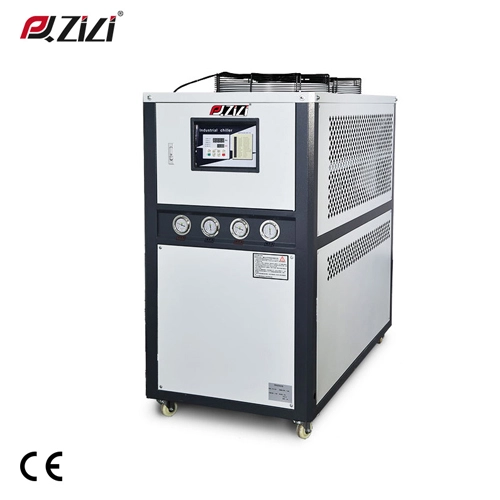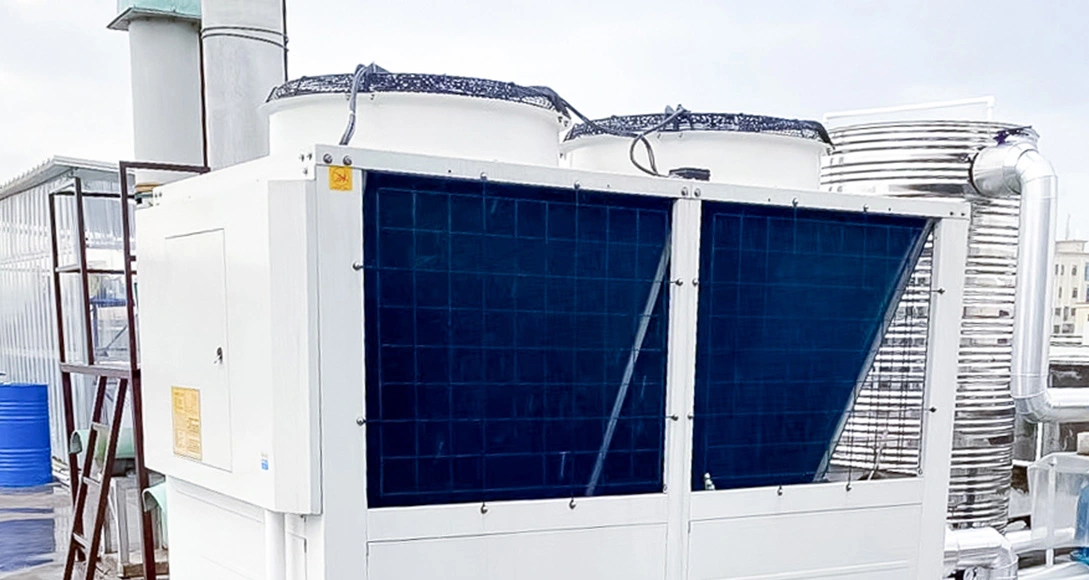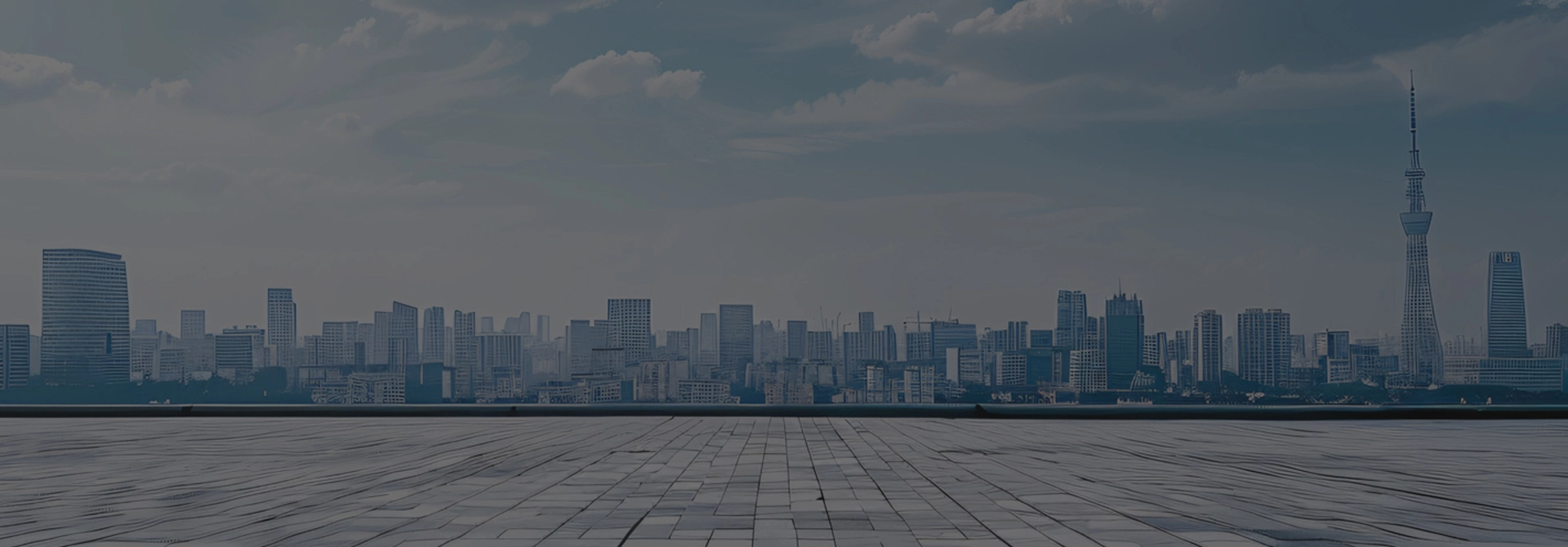


An air-cooled chiller works by removing heat from a liquid via a vapor-compression refrigeration cycle. The process begins with the refrigerant absorbing heat from the liquid in the evaporator, causing the refrigerant to vaporize. The vaporized refrigerant is then compressed, raising its temperature and pressure. It moves to the condenser, where air blown by fans removes the heat, causing the refrigerant to condense back into a liquid. This liquid refrigerant then passes through an expansion valve, reducing its pressure and temperature before returning to the evaporator to repeat the cycle. The cooled liquid is circulated to provide air conditioning or process cooling.
Air-cooled and water-cooled chillers function similarly in that they both cool the system to regulate temperature, but they differ in their cooling methods.
1. Air cooled chiller: using fan cooling, no cooling water tower, easy to install, suitable for places with limited water resources or inconvenient to install water tower.
2. Water cooled chiller: relies on cooling water tower heat dissipation, high cooling efficiency, suitable for long-term operation, high-power refrigeration needs of the place, but needs additional water and equipment maintenance.
| Feature | Air-Cooled Chiller | Water-Cooled Chiller |
| Heat Dissipation | Releases heat into surrounding air via fan | Uses water from a cooling tower or water loop |
| Components | Compressor, condenser, expansion valve, evaporator | Compressor, condenser, evaporator, cooling tower |
| Cooling Method | Ambient air cools refrigerant in condenser | Water circulates through condenser to absorb heat |
| Installation | Easier installation, no need for cooling tower | Requires additional equipment (cooling tower, water source) |
| Space Efficiency | Suitable for places with limited space for cooling towers | Requires extra space for cooling tower or water loop |
Air-cooled chillers are widely used in different industries. Below are some of the common occasions where air-cooled chillers are used:
1. HVAC systems:Used in commercial buildings, hospitals and offices to cool indoor spaces.
2. Plastic and Rubber Manufacturing: To cool molds in plastic and rubber production.
3. Injection Molding: Cools molds to ensure proper molding of plastic parts.
4. Laser Cutting and CNC Machines: Prevents machines from overheating.
5. Food and Beverage: Used to store and refrigerate food products to ensure that foods that require low temperature production are produced at the appropriate temperature and that high temperature does not damage food ingredients.
6. Laboratories and medical facilities: cooling sensitive equipment and storage units.
7. Marine industry: Cooling systems on ships, such as air conditioning and refrigeration systems.
Air-cooled chillers typically have a lifespan of 15 to 20 years, depending on various factors such as maintenance, operating conditions, and quality of installation. Regular maintenance, including cleaning coils, checking refrigerant levels, and inspecting electrical components, can significantly extend the chiller’s life. Operating conditions like ambient temperature, load variations, and environmental factors also play a crucial role. High-quality installation and adherence to manufacturer guidelines further ensure optimal performance and longevity. While some units may last beyond 20 years with exceptional care, others might require replacement sooner if subjected to harsh conditions or poor maintenance practices.



